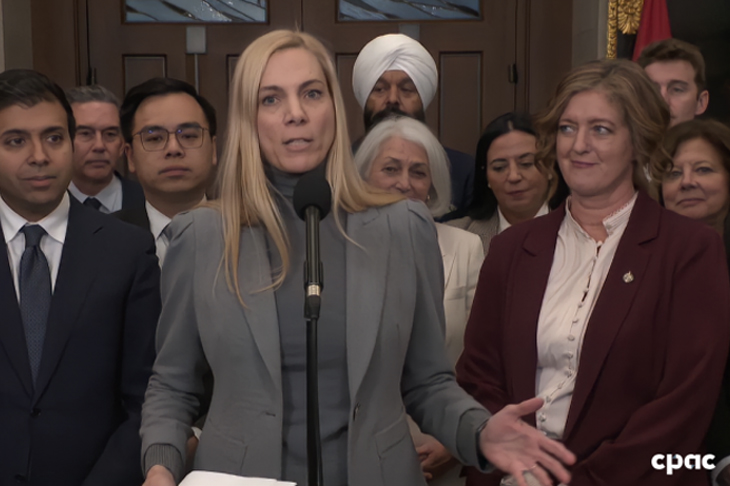Bell and cablecos argue Cabinet proves them right
By Ahmad Hathout
OTTAWA – Independent and incumbent internet service providers have filed letters to the Federal Court of Appeal explaining the impact of the Federal Cabinet’s decision last weekend on the CRTC’s decision to slash wholesale internet rates and whether it should factor into the court’s ultimate decision.
On August 15, one year following the decision by the CRTC to slash wholesale internet rates, Innovation, Science and Economic Development (ISED) said the Regulator’s decision “do not, in all instances, appropriately balance the policy objectives of the wholesale services framework” and that in some instances may undermine investments in networks.
On Monday, TekSavvy filed a letter with the court arguing Cabinet’s opinion has – and should have – no bearing on the court’s impending decision because the petition to Cabinet and the arguments already presented to the court are different in nature: one discusses policy and fact, and the other, law or jurisdiction.
The notion, then, that the court should allow the appeal based on Cabinet’s decision should be rejected, the company argued.
Last week, Bell and the cable companies including Rogers, Shaw, Videotron, Cogeco and Eastlink filed letters of their own to the court arguing Cabinet’s opinion proved they were right in bringing the appeal. That same week, in response to Cabinet’s decision, TekSavvy and a number of other independent ISPs said they would be increasing their internet prices. Those independent ISPs reduced prices following the CRTC’s decision in question last summer.
The court gave TekSavvy and CNOC, the main opposition to the incumbents, three days to respond.
The Competitive Network Operators of Canada (CNOC), which represents smaller ISPs, said in a letter filed on Tuesday that Bell and the cablecos “mischaracterize(d) the Cabinet decision and its effect on the issues” and therefore their “submissions are unhelpful.”
Similar to TekSavvy’s argument, CNOC said in the letter that the Cabinet decision does not touch on aspects of the law or jurisdiction of the appeal, nor does it delve into the details from which Bell claims its case was right.
“Nothing in the Cabinet Decision or its pre-amble suggests that the CRTC disregarded telecommunications policy in rendering the Final Rates Order.” – CNOC
“Nothing in the Cabinet Decision or its pre-amble suggests that the CRTC disregarded telecommunications policy in rendering the Final Rates Order,” CNOC’s letter said. “It does not identify any rates that run contrary to these policy objectives, or any defects in the CRTC’s reasoning process.”
Cartt.ca reported last week a clarification in ISED’s use of the words “in all instances” when it said the CRTC rates do not in all cases balance the policy objectives.
“The fact that the Governor in Council, in some unspecified instances, may have taken a different approach to balancing telecommunications policy objectives in setting certain wholesale rates confirms only one thing: that the requisite balancing exercise did in fact take place,” CNOC counsel said in the letter, adding Cabinet doesn’t suggest that the CRTC didn’t include “any” (CNOC’s emphasis) policy objectives coming to its decision.
CNOC argued during the hearing earlier this summer the incumbents’ complaints were a matter of policy that was outside the jurisdiction of the courts, and that the CRTC didn’t need to touch on all policy objectives but just some, which it argues it did.
“The Cabinet Decision thus vindicates the concerns that Bell has raised throughout these proceedings.” – Bell Canada
In any event, the consortium said the incumbents did not file their arguments as fresh evidence, so it wouldn’t be permitted in court anyway.
Bell argued in its letter Cabinet’s decision proved its point, which was that the CRTC’s decision did not appropriately balance the objectives in the Telecommunications Act – namely, that a decision to significantly slash rates and force retroactive payments dating back three years did not align with furthering investments in facilities.
“The Cabinet Decision thus vindicates the concerns that Bell has raised throughout these proceedings, and underlines why this Court should allow the appeal and remit the decision to the CRTC,” Bell argued.
The cable carriers argued the Cabinet decision is “consistent” with their arguments “that the CRTC committed an error of jurisdiction by disregarding improperly important policy objectives that it was required to consider” under the Telecommunications Act and the 2006 Cabinet direction. That cabinet directive requires the CRTC to make decisions that “rely on market forces to the maximum extent feasible as a means of achieving the telecommunications policy objectives.”
The cablecos said they support and adopt Bell’s letter.
TekSavvy noted in its letter Cabinet did not send the decision back to the CRTC for reconsideration – since the CRTC was already reviewing the matter – and therefore Bell’s position is not vindicated and does not automatically mean the appeal should be allowed and sent back to the regulator.
CNOC said in its own letter if the court decides to make a decision based on the Cabinet decision, which is “wholly inappropriate,” then it “would require this Court to enter the political fray and involve itself in a policy discussion between two institutions of the executive branch,” which are structurally separate.
TekSavvy similarly said that “the appellants’ argument that this Court should remit the matter back to the CRTC based on the Cabinet Decision must be rejected.”
It isn’t altogether clear in its letter Bell is making that distinct argument.
Asked about whether that was its stated intention – for the Court to make a determination based even in some part on the Cabinet opinion – Bell lawyer Steven Mason told Cartt.ca he could not speak on the matter beyond saying “it is clear from that letter that Bell’s position is that the Cabinet decision illustrates why Bell was right in its arguments during the hearing.”
Bell argued that the benefit of the court sending the decision back to the CRTC would mean the regulator would view the case not only from the policy considerations as laid out by Cabinet but also the legal angle as decided by the court.
Regardless, the independents argue that just the fact alone that the incumbents are raising Cabinet’s opinion, which viewed the issues from a policy angle, as proof of the correctness of their case in court shows “their jurisdictional arguments are nothing more than dressed-up policy complaints.”









